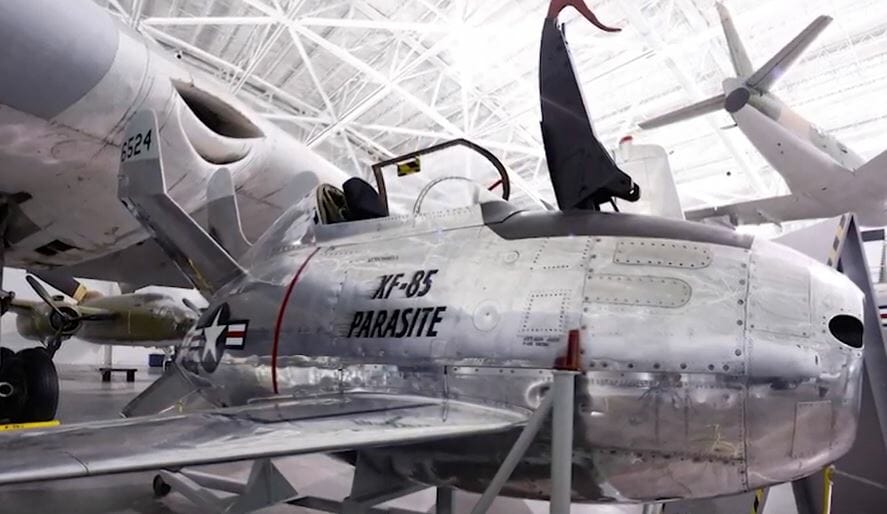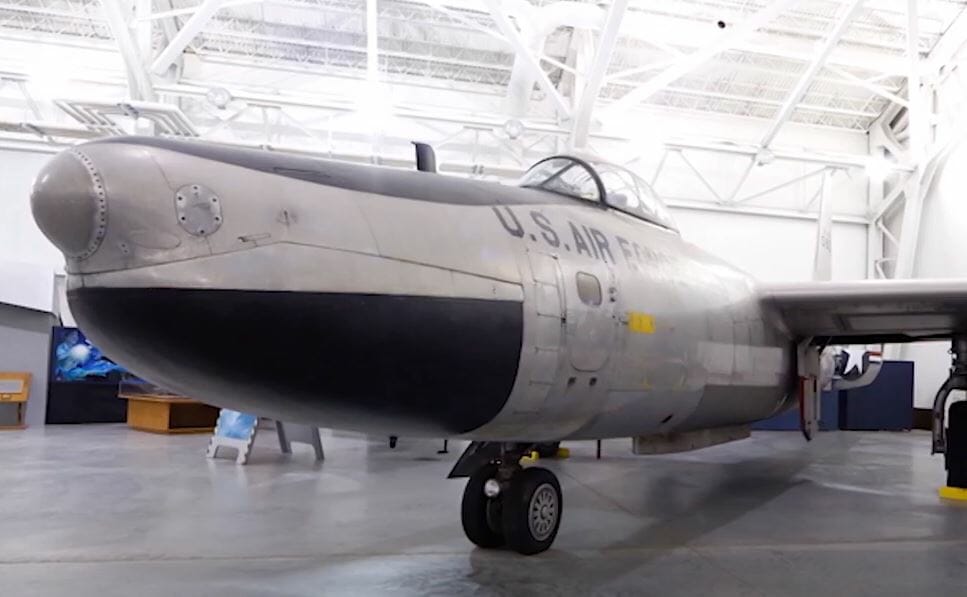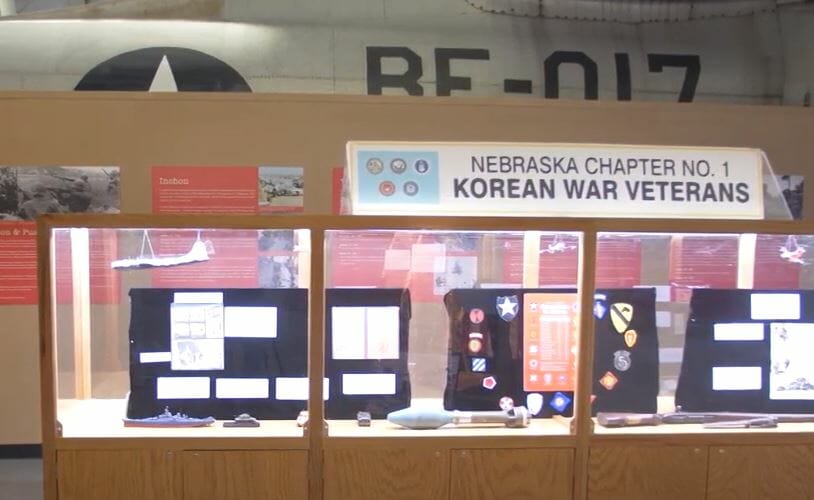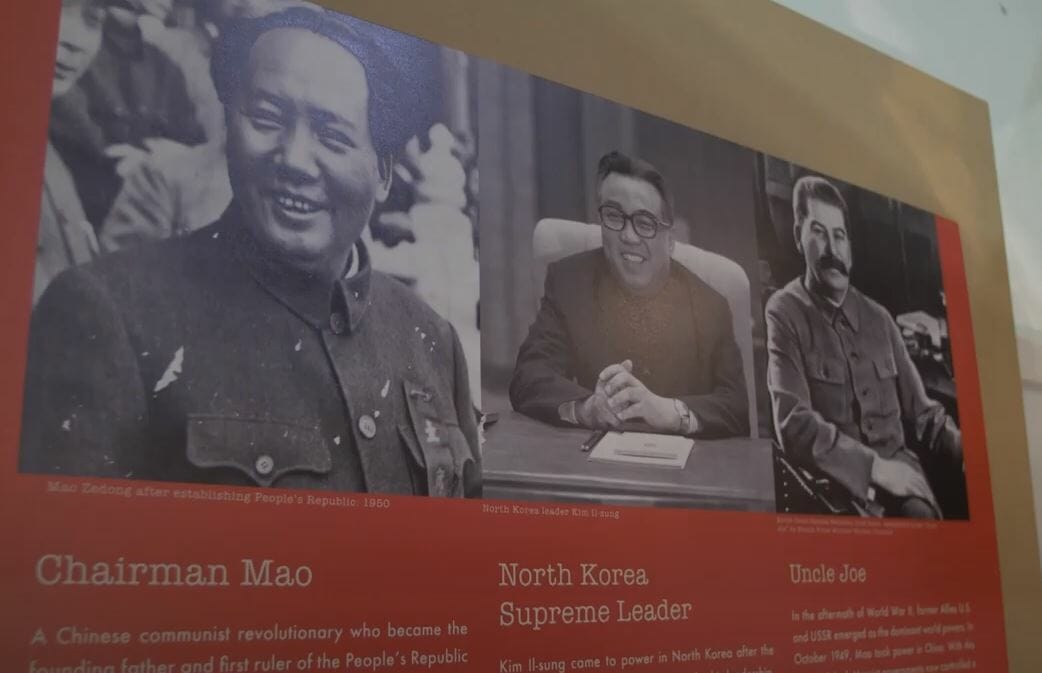Whether you’re interested in aerospace technology or military history, the Strategic Air Command & Aerospace Museum in Ashland, Nebraska is a great place to visit.
“People look at these objects and relate them to American history and American military history and heritage and what they represent.”
The museum preserves the history and legacy of the Strategic Air Command, the Cold War and aerospace with its unique collection of artifacts and exhibits.
We visited the Strategic Air Command & Aerospace Museum and interviewed Jeffrey Cannon, President & CEO. Cannon explains how the museum has aircraft that can’t be seen anywhere else and shared the significance of some of the museum’s exhibits. “People look at these objects and relate them to American history and American military history and heritage and what they represent,” said Cannon.
Below is a list of some of the artifacts and exhibits on display at the museum. Click on these links to be taken to each exhibit in the video.
- SR-71 “Blackbird”
- B-36 “Peacemaker”
- XF-85 “Goblin”
- RB-45C “Tornado”
- NASA – Astronaut Clayton Anderson
- High Pressure Exhibit
- Children’s Learning Center
When visitors enter the Strategic Air Command & Aerospace Museum, they’re met with the SR-71 “Blackbird.”
One of the most popular artifacts in the museum is the SR-71, operated both by the U.S. Air Force and NASA. With a cruising speed of 1,320 mph, its exact maximum speed is still classified. Developed in the 1950’s and deployed in the 1960’s, it represents the development of surveillance technology, carrying a wide range of cameras and sensors.
The B-36 “Peacemaker,” the largest production bomber ever built, is one of only four left in the country.
The B-36 was the primary nuclear weapons delivery vehicle of Strategic Air Command. With a maximum takeoff weight of 410,000 lbs., pilots referred to it as the “Magnesium Monster”. It had the longest wingspan of any combat aircraft ever built at 230 ft.
The XF-85 “Goblin” is one of two in existence. It had a project cost of $3,210,664 and was flown a total of 2 hours and 19 minutes.

The XF-85 was an American prototype fighter aircraft. Its intended role was to defend bombers from interceptor aircraft during World War II. Only two prototypes were built before the U.S. Army Air Forces terminated the program.
The Strategic Air Command & Aerospace Museum’s RB-45C is the only one left in the entire world.
The RB-45C “Tornado” was the first operational jet bomber to enter service with the United States Air Force and the first multiengine jet bomber in the world to be refueled in midair.
Some of the more popular exhibits and artifacts at the museum are courtesy of Nebraska’s own astronaut, Clayton Anderson.
Clay Anderson generously donated a number of materials to the museum, also providing a close relationship with NASA. Clayton traveled aboard Shuttle Mission STS-117 to the International Space Station in the summer of 2007. He also completed Shuttle Mission STS-131 in 2010.
Another popular attraction at the museum is the High Pressure exhibit, highlighting the Korean War.
“For people who are coming out to the museum – what we’re hoping they get from this exhibit is a better understanding of the Korean War, how it played out, but also the individual stories.”
“The High Pressure Exhibit focuses on the Korean War and aviation in the Korean War where we highlight not just the timeline but also some of the pop culture of the period and the role aviation played throughout the war. That is the story that needs to be told.” said Brian York, Curator Exhibits & Collections.
The Korean War which began June 25, 1950 and lasted three years, fits into the role of aviation by making the jump from radio propeller-driven aircraft to jet engines to fighters and bombers.
During the Cold War, development of tiny portable and hidden video and recording technologies emerged. The Cold War accelerated technology and learning and the development of new weapons, weapon systems and surveillance systems.
“Whether it’s a missile system or a satellite system, these were all rapidly growing technologies during the Cold War period that have set us up for who we are and what we are today relative to our global impact,” said Cannon.
“For people who are coming out to the museum – what we’re hoping they get from this exhibit is a better understanding of the Korean War, how it played out, but also the individual stories. Because as we document the evolution of aviation, the evolution of warfare, the evolution of the Cold War, what is always within all of us are the personal stories. Because all of this is very personal. It’s about individuals.” said York.
The Children’s Learning Center at the Strategic Air Command has served 32,250 student contacts in the community.
The education department has grown over the years with many of its contacts going through Omaha public schools, the largest district in Nebraska with over 50,000 students.
The museum’s science, technology, engineering and math (STEM) programs include robotics. Several activities are directly related to robotics, modular robotics with a product called Cubelets that involves putting blocks together to create differently functioning instruments.
“We’re teaching kids how to think modularly about how to engage and build the world of the future.” Education Director Mark Strehle said.
“We believe that the primary takeaway, the primary educational opportunity that we have at the Strategic Air Command & Aerospace Museum is to teach American military history. The second is the history of the Strategic Air Command, what it represented during the 20th century. And going forward, what the legacy and history of that is.” Cannon said.
Visit the Strategic Air Command & Aerospace Museum website for more information.


























